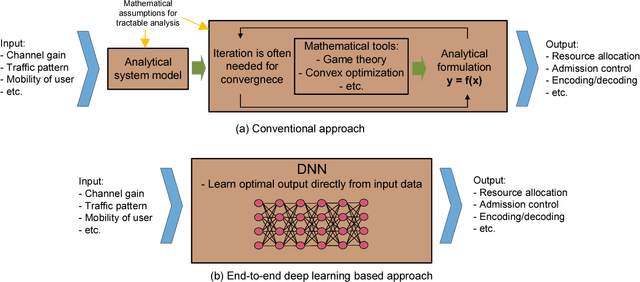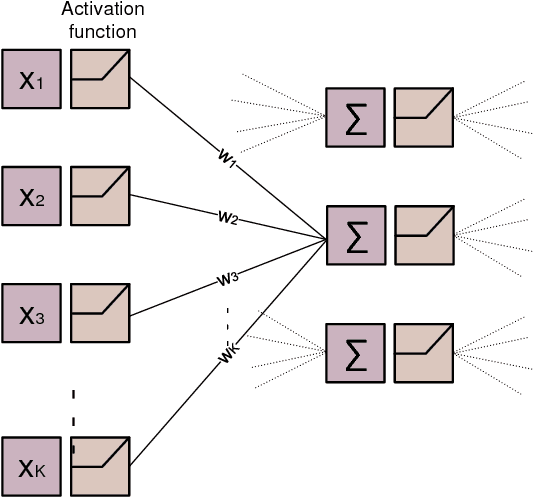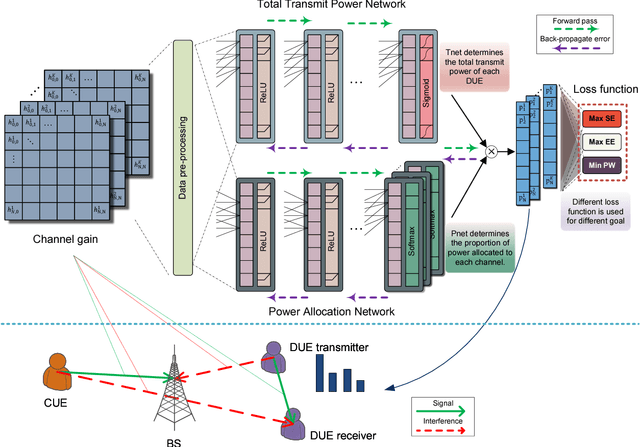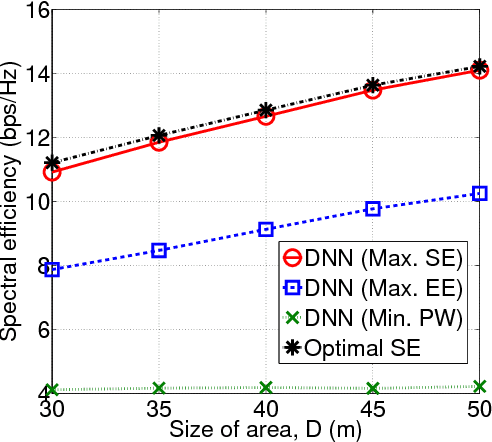Woongsup Lee
LLM-Empowered Resource Allocation in Wireless Communications Systems
Aug 06, 2024Abstract:The recent success of large language models (LLMs) has spurred their application in various fields. In particular, there have been efforts to integrate LLMs into various aspects of wireless communication systems. The use of LLMs in wireless communication systems has the potential to realize artificial general intelligence (AGI)-enabled wireless networks. In this paper, we investigate an LLM-based resource allocation scheme for wireless communication systems. Specifically, we formulate a simple resource allocation problem involving two transmit pairs and develop an LLM-based resource allocation approach that aims to maximize either energy efficiency or spectral efficiency. Additionally, we consider the joint use of low-complexity resource allocation techniques to compensate for the reliability shortcomings of the LLM-based scheme. After confirming the applicability and feasibility of LLM-based resource allocation, we address several key technical challenges that remain in applying LLMs in practice.
Deep Learning-based Resource Allocation For Device-to-Device Communication
Nov 25, 2020



Abstract:In this paper, a deep learning (DL) framework for the optimization of the resource allocation in multi-channel cellular systems with device-to-device (D2D) communication is proposed. Thereby, the channel assignment and discrete transmit power levels of the D2D users, which are both integer variables, are optimized to maximize the overall spectral efficiency whilst maintaining the quality-of-service (QoS) of the cellular users. Depending on the availability of channel state information (CSI), two different configurations are considered, namely 1) centralized operation with full CSI and 2) distributed operation with partial CSI, where in the latter case, the CSI is encoded according to the capacity of the feedback channel. Instead of solving the resulting resource allocation problem for each channel realization, a DL framework is proposed, where the optimal resource allocation strategy for arbitrary channel conditions is approximated by deep neural network (DNN) models. Furthermore, we propose a new training strategy that combines supervised and unsupervised learning methods and a local CSI sharing strategy to achieve near-optimal performance while enforcing the QoS constraints of the cellular users and efficiently handling the integer optimization variables based on a few ground-truth labels. Our simulation results confirm that near-optimal performance can be attained with low computation time, which underlines the real-time capability of the proposed scheme. Moreover, our results show that not only the resource allocation strategy but also the CSI encoding strategy can be efficiently determined using a DNN. Furthermore, we show that the proposed DL framework can be easily extended to communications systems with different design objectives.
Application of End-to-End Deep Learning in Wireless Communications Systems
Aug 07, 2018



Abstract:Deep learning is a potential paradigm changer for the design of wireless communications systems (WCS), from conventional handcrafted schemes based on sophisticated mathematical models with assumptions to autonomous schemes based on the end-to-end deep learning using a large number of data. In this article, we present a basic concept of the deep learning and its application to WCS by investigating the resource allocation (RA) scheme based on a deep neural network (DNN) where multiple goals with various constraints can be satisfied through the end-to-end deep learning. Especially, the optimality and feasibility of the DNN based RA are verified through simulation. Then, we discuss the technical challenges regarding the application of deep learning in WCS.
 Add to Chrome
Add to Chrome Add to Firefox
Add to Firefox Add to Edge
Add to Edge